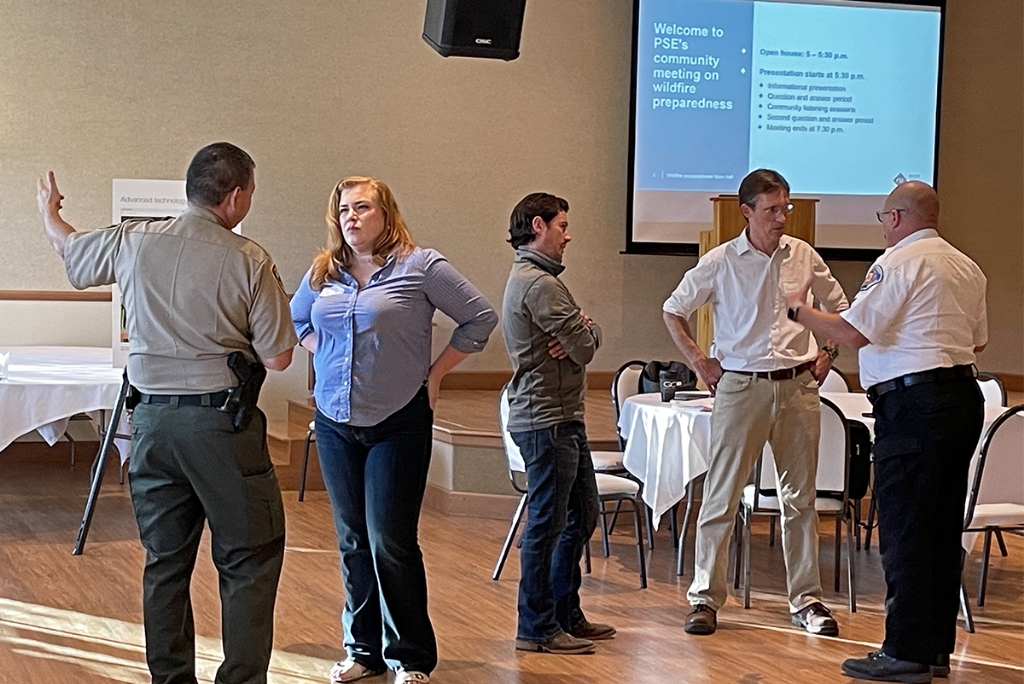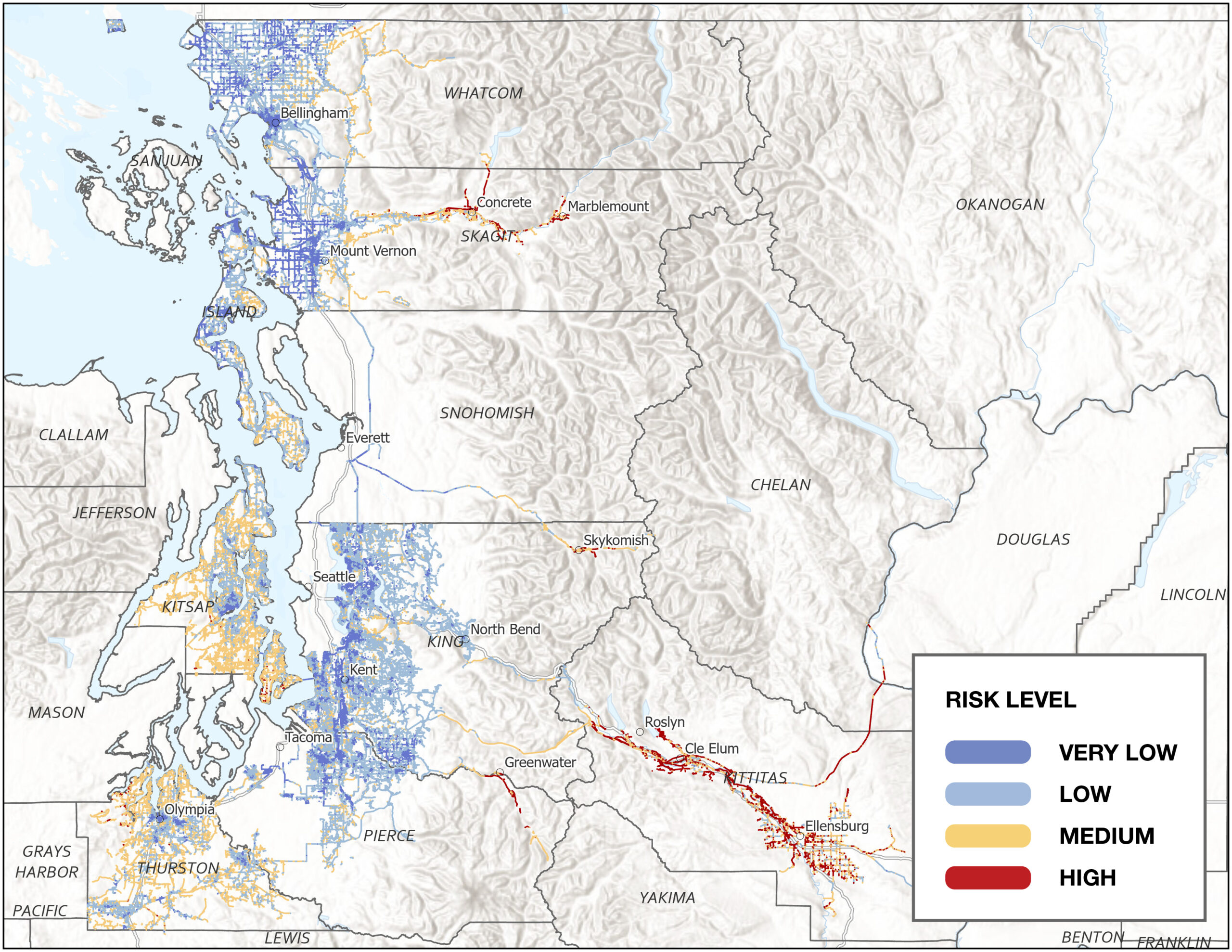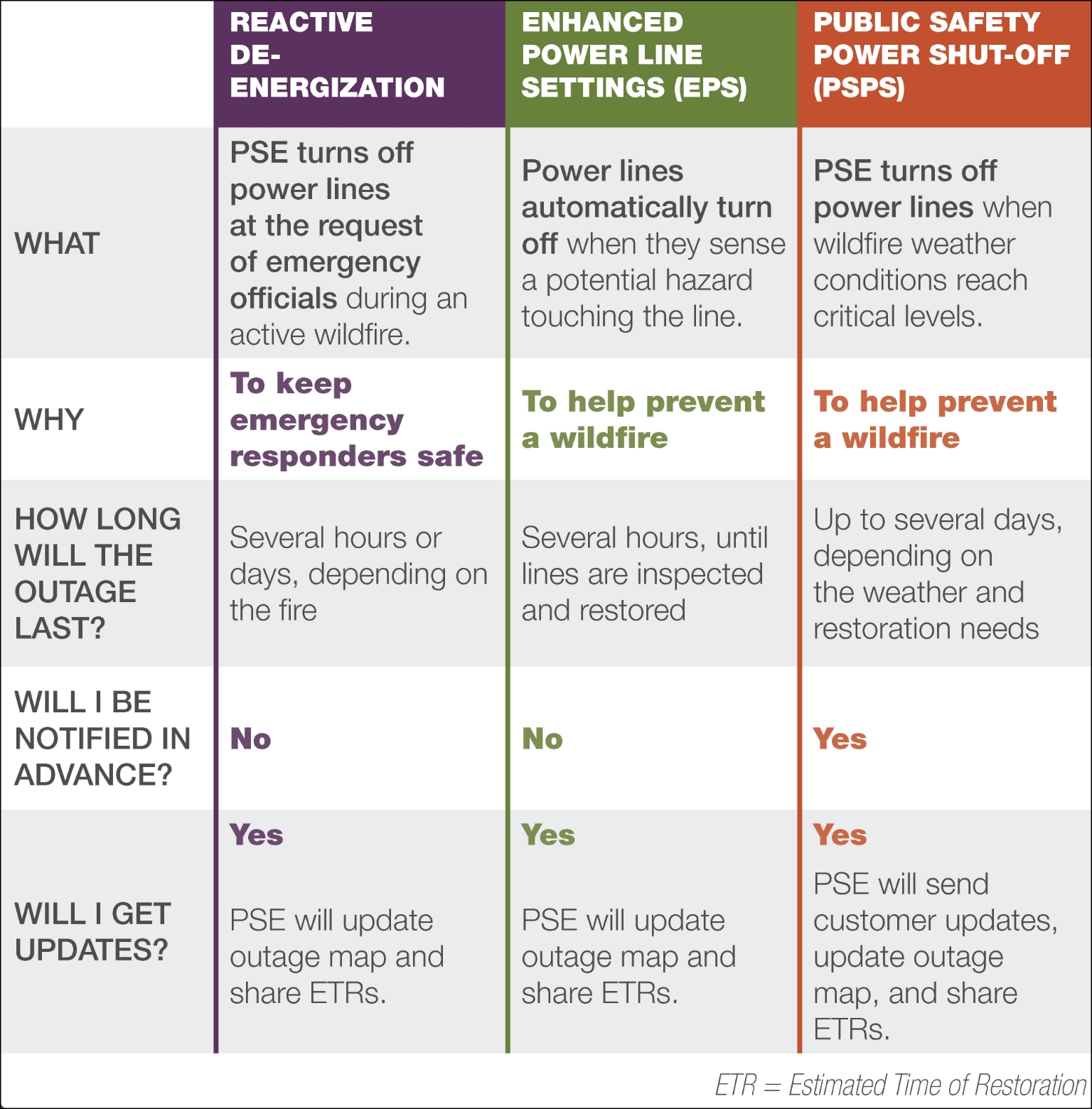STATION 1
Wildfire mitigation program overview
Why we are here today
Wildfires have emerged as a significant public health and safety concern for much of the Western United States.
To help mitigate the evolving risk of wildfires in our region, PSE developed a comprehensive approach that ensures safety while balancing the reliable delivery of energy to communities year-round.
This program invests in the reliability and resiliency of our electric system and implements new technologies and best practices to respond to our region’s increasing wildfire risk.
We are committed to keeping our customers and impacted communities informed and engaged in our wildfire program. We invite you to walk through the various stations and talk with PSE staff to learn more about the program, the Public Safety Power Shutoff (PSPS) Plan, and steps you can take to prepare!
How we got here
In 2018, PSE began talking with customers, local officials, industry experts, and others about wildfire risk and PSE’s mitigation and response plan.
In 2022, PSE conducted town halls with customers, community organizations, and emergency response partners in three communities located in higher wildfire risk areas to understand the best methods of communication before and during a wildfire event and how to support vulnerable customers.
To delve deeper into what we’ve heard and how it was implemented, kindly click on the process graphic image for further details.
We are continuing to collaborate with community and emergency response partners to understand and help minimize impacts and incorporate best practices as we move forward.
PSE's wildfire mitigation and response program
There are five elements to the wildfire mitigation and response program
Situational awareness
Evaluating the condition of the electric system and the environment around it.
Grid hardening
Regular updates to the electric system, targeted maintenance, and improvement activities that will further reduce the risk of wildfire.
Operational procedures
Prevention measures and response activities for the operation of our electric system during periods of elevated wildfire risk.
Equity
Embedding equity into the planning and implementation of our wildfire mitigation strategies.
Community engagement
Keeping customers and impacted communities engaged in our program and providing timely communications during an emergency.
Understanding wildfire risk
Assessing and mitigating risk is a central component of PSE’s Wildfire Mitigation and Response Program. PSE’s risk model helps us understand the environment around our infrastructure and other factors that can increase wildfire risk.
Our risk model helps us determine where to:
- focus investments for grid hardening projects to reduce risk
- establish additional situational awareness tools like weather stations
- utilize operational procedures, such as EPS or PSPS, during critical fire weather conditions
PSE’s risk model includes:
- wildfire probability and impact
- historical fire data
- correlated weather patterns
- existing grid infrastructure
Tools like Enhanced Power Line Settings or Public Safety Power Shutoff could be used anywhere in PSE’s service area if elevated fire risk conditions are forecast, however, customers in areas at higher risk levels on PSE’s risk model are more likely to experience power outages.
Monitoring risk in real-time
PSE’s System Operators use real-time information and data from our risk model to evaluate the condition of the electric system and the environment around it and implement risk reduction measures.
Operational procedures to reduce risk:
Pausing work: Temporarily pause planned construction activities during periods of elevated fire risk.
Enabling Enhanced Powerline Settings (EPS): When fire risk conditions are elevated, PSE may use these settings to make our power lines more sensitive to potential hazards and automatically turn power off to reduce the risk of fire.
Public Safety Power Shutoff (PSPS): During extreme fire risk weather conditions, PSE may proactively turn off selected power lines to reduce the risk of wildfire.
Weather conditions that increase wildfire risk
- Strong winds
- Very dry vegetation
- Low humidity
Types of outages that could occur during wildfire season
During wildfire season, PSE takes proactive steps to ensure safety while balancing reliability. These prevention measures and response activities can result in power outages. Here are three types of outages and how they work.
Reactive de-energization
What: PSE turns off power lines at the request of emergency officials during an active wildfire.
Why: To keep emergency responders safe
How long will the outage last? Several hours or days, depending on the fire
Will I be notified in advance? No
Will I get updates? PSE will update outage map and share ETRs.
Enhanced power line settings (EPS)
What: Power lines automatically turn off when they sense a potential hazard touching the line.
Why: To help prevent a wildfire
How long will the outage last? Several hours, until lines are inspected and restored.
Will I be notified in advance? No
Will I get updates? Yes, PSE will update outage map and share ETRs.
Public Safety Power Shut-off
What: PSE turns off power lines when wildfire weather conditions reach critical levels.
Why: To help prevent a wildfire
How long will the outage last? Up to several days, depending on the weather and restoration needs.
Will I be notified in advance? Yes
Will I get updates? Yes, PSE will send customer updates, update outage map, and share ETRs.




